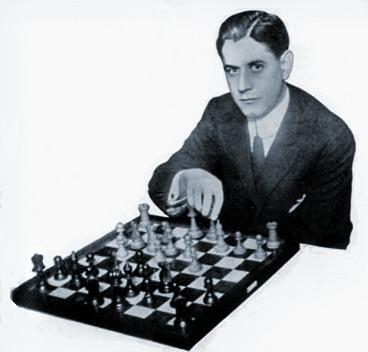
Edward Winter

José Raúl Capablanca
Chess books in the descriptive notation are becoming unmarketable, rather like black and white films. And so, just as Hollywood has been using computer-originated colouring to ‘modernize’ ageing celluloids, chess publishers have set about converting classic tomes, and some others, to the algebraic notation. After a slow, haphazard start (Emanuel Lasker’s works are still on the waiting-list), there is now a burgeoning of ‘algebraicized’ editions, to borrow Batsford’s neologism. (It could have been worse: ‘de-descriptivized’.)
Capablanca’s three main books – My Chess Career (1920), Chess Fundamentals (1921) and A Primer of Chess (1935) – have undergone conversion, with mixed results. My Chess Career, his first book in English, was published a year before he became world champion. It had 35 annotated games, linked by an autobiographical narrative containing both self-praise (homed in on by some critics) and self-censure (ignored by almost all critics). The publishers, G. Bell & Sons, rose to the occasion and produced a stately, navy blue hardback; Capablanca’s signature was embossed in gold on the front cover, and there was a fine frontispiece portrait, protected by a translucent interleaf. That was chess book production in the lean aftermath of the Great War. What has happened to our game if, in the 1990s, we are reduced to limp opuscules like Garry Kasparov’s Chess Puzzle Book?
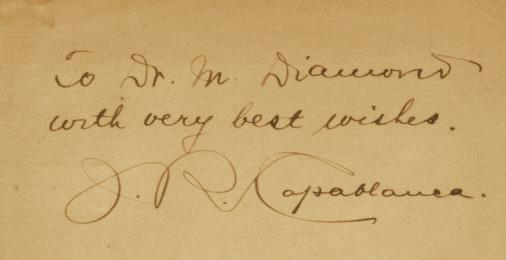
One of our inscribed copies of My Chess Career
Chess autobiographies hardly existed in 1920, and that year’s April issue of the American Chess Bulletin (pages 65-66) was entranced by My Chess Career: ‘Of all of Capablanca’s varied achievements none, we venture to say, will be hailed with greater delight than this his latest and best contribution to the literature of the game.’ In 1966 Dover Publications Inc. reissued the book with a new Introduction by Capablanca’s most impassioned cheer-leader, Irving Chernev. He described My Chess Career as one of the five most exciting chess books he had read.
In 1994, Grandmasters Publishing of Corsicana, Texas brought out a coarse algebraic version, ‘newly edited and revised by Lyndon Laird’. The task sounds a clerical doddle, but Mr Laird highlighted the various pitfalls by side-stepping none of them. Cheap in all but price, his garish paperback extirpated the original book’s style, flavour and dignity. Labelled an ‘Expanded Edition’, it tagged on some 60 pages of extraneous material; among the unwarranted and unwanted partie-crashers were four Capablanca scores from Nottingham, 1936, with annotations by Alekhine.
As early as page 5, the reader may have foreboding about Mr Laird’s credentials for the job. Richard Réti wrote that chess was Capablanca’s mother tongue, but in his Foreword Mr Laird bafflingly attributes this famous remark to Reuben Fine. He nevertheless sees fit to make fussily redundant interjections throughout the text, though liable to be silent when a word of amendment is required. For example, at move 26 in Capablanca v Bernstein, St Petersburg, 1914 mate in three, not five, is possible.
Unsurprisingly, mistakes have been added. At the end of Game 4, Capablanca v Raubitscheck, victory becomes defeat (‘0-1’ instead of ‘1-0’). Game 6, played in June 1908, is headed ‘1906-1908’, as if it were a correspondence epic. Game 22 (v Nimzowitsch) is also misdated. In Capablanca v Janowsky, San Sebastian, 1911 two gross annotational errors (confusion of the a- and h-pawns) have been made in Capablanca’s notes to his 52nd and 58th moves. Wanted: a respectful edition of My Chess Career from a responsible publisher.
Caution and sobriety, rather than presumption and vulgarity, are the hallmarks of Cadogan Chess’s algebraic versions of Chess Fundamentals and A Primer of Chess, published in 1994 and 1995 respectively. Few stops have been pulled out in the production department, and in each case the algebraic paperback has roughly half as many pages as the descriptive hardback. There is no stopping progress. Nonetheless, Capablanca’s original texts are followed closely, to the extent that in A Primer of Chess even such slips as the move numbers on pages 128-129 and the year of two Euwe games on page 143 and page 146 have been left untouched.
Botvinnik described Chess Fundamentals as the greatest of all books on the game, and Capablanca’s standing as a writer has been widely debated. Golombek’s Preface to Capablanca’s Hundred Best Games of Chess called him ‘strangely poor at explaining and annotating his own games’, whereas 30 years later, in The Encyclopedia of Chess, the same Golombek wrote that Capablanca was ‘a lucid and excellent writer on chess’. In an unexpectedly lukewarm review of Chess Fundamentals on page 10 of its January 1922 issue, the BCM commented:
‘It must not be thought that a study of this book will make a beginner into a good player, nor do we imagine that the author expects such to be the result, though he leads the way to a very great improvement by his lucid explanations.’
The Cuban gave his own view in a 1934 Preface to the reissue of the US version:
‘... Chess Fundamentals is as good now as it was 13 years ago. It will be as good a hundred years from now; as long in fact as the laws and rules of the game remain what they are at present. The reader may therefore go over the contents of the book with the assurance that there is in it everything he needs, and that there is nothing to be added and nothing to be changed. Chess Fundamentals was the one standard work of its kind 13 years ago and the author firmly believes that it is the one standard work of its kind now.’
This is vintage Capablanca. Believing that he had written an outstanding book, he saw no reason to pretend otherwise. He has often been termed chary with analysis, although his ability to pinpoint succinctly a game’s critical moments is beyond dispute. The particularity of his prose style was its absence of style, its plainness. Simple vocabulary and simple syntax made him the antithesis of Nimzowitsch and Tartakower. Very much a literalist, in annotations he shunned figures of speech like similes and metaphors, as well as cultural references, paradox, humour and discursive matter, as if such additives would cloud his annotations’ pedagogical value. At their most skeletal (e.g. in his booklet on the match against Lasker) his notes inevitably disappointed, but whatever they lacked in colour they gained in clarity and timelessness. Owing to its direct, spare prose, Chess Fundamentals reads as naturally today as it did in 1921.
We know from Olga Capablanca Clark’s Introduction to Capablanca’s Last Chess Lectures (1967) that her husband found writing easy but disliked it. Evidence exists too that it was far from profitable for him. A Primer of Chess appeared at the beginning of 1935, and on 17 October of that year the US publishers, Harcourt, Brace and Company, Inc., informed him that ‘a little more than 1,500 copies’ had been sold. A royalty statement dated 30 June 1937, accompanied by a cheque for $46.62, showed that US sales in the first half of 1937 had totalled 155, plus one copy sold to Canada. [See the Afterword below.]
Notwithstanding his oft-alleged ‘laziness’, Capablanca annotated more of his own games than is often realized: over 150. But he wrote fitfully (for example, hardly anything between 1928 and 1934), and for an overview of his career we must turn to third parties. In English the choice is between a pair of quinquagenarians, The Immortal Games of Capablanca by Fred Reinfeld (1942) and Capablanca’s Hundred Best Games of Chess by Harry Golombek (1947).
The Reinfeld work, which has 113 games, first appeared nine months after Capablanca died. It was reprinted in 1990 by Dover, and there was another (1974) descriptive notation edition, from Collier Books, with an Introduction by Robert Byrne. The manifold factual mistakes in Reinfeld’s book remain uncorrected to this day, but overall it was not bad for its time. Dover’s blurb reminds us that Capablanca’s best games are ‘models of beauty, economy, clarity and imagination’. How often such words have been written, but how true they are.
Capablanca’s Hundred Best Games of Chess, originally published in the United Kingdom by Bell, was reprinted in paperback by Batsford (1986) and by the BCM (1989). In neither case was any effort made to patch up the analysis and history; C.N. 1951 [see pages 268-269 of Kings, Commoners and Knaves and another feature article] showed how the BCM botched its chance. From the outset Golombek denied that the Bell original had any errors at all, and he even wrote (CHESS, January 1951, page 81), ‘To the best of my knowledge it contains only one misprint’. Golombek was never one for afterthoughts. To the end he was unable to admit the need for sweeping repair work, but the objective reader’s appreciation of the book dwindles the more he scrutinizes it. John Nunn certainly had his work cut out in 1996 when Batsford decided to do an algebraic edition, under the title Capablanca’s Best Games. At Nunn’s request, we submitted a list of historical corrections; there turned out to be well over 150 in all, a figure decidedly unflattering to both Golombek and the writer of the memoir of Capablanca, Julius du Mont. (Not quite all the amendments have been heeded; for instance, the date of Capablanca’s match against Euwe (page 26) should read 1931, not 1932.)
In the annotations Nunn decided to correct ‘minor’ analytical flaws without comment but to use footnotes in important cases. As ever, his observations are of much interest, an example being the game Marshall v Capablanca, New York, 1931.
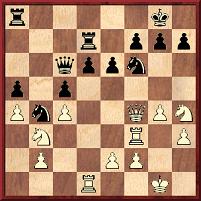
Play continued 21...Qxa4 22 Rxd6 Nbd5. Golombek awards Black’s 22nd move an exclamation mark for being ‘a neat little combination, winning a pawn by force’. A footnote by Nunn disputes that: ‘The two players and Golombek all apparently overlooked the crushing move 23 Ra6!!, which wins material. After most replies White can just take the knight, while 23...Nxf4 24 Rxa8+ Rd8 25 Rxd8+ Ne8 26 Rxf4 g5 27 Rf3 gxh4 28 Nxc5 is also an easy win.’ Nunn writes that since Capablanca’s intended combination is unsound he should have preferred the quieter line 21...Ra6 22 g5 Ne8 23 Ra1 Rb7, ‘retaining some positional advantage’. Unfortunately, this judgement throws into disarray the reader’s understanding of the game as a whole, for earlier notes by Golombek are allowed to stand. He had nothing but praise for Capablanca in this game, and criticized White’s play at moves 7, 8, 10, 11, 14 and 15. Indeed, 15 a4 was castigated as ‘a blunder, after which the game is already past saving’. If that is all true, it is unclear why Black has only ‘some positional advantage’ after the play pointed out by Nunn at move 21.
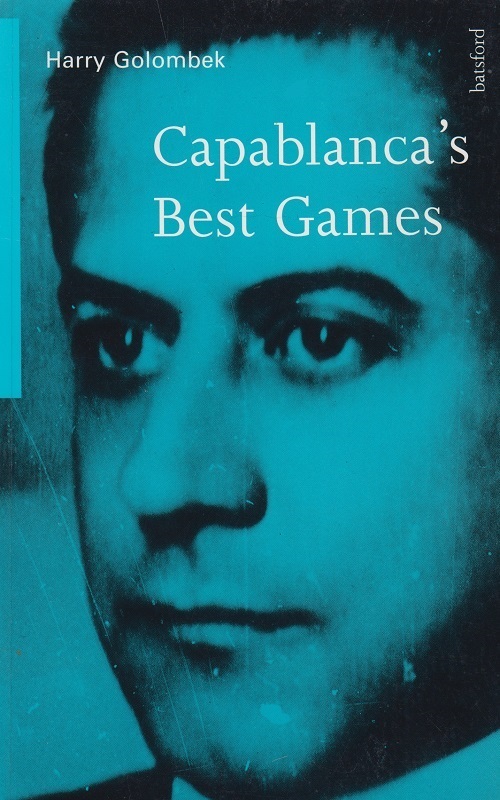
At their best Golombek’s notes were effective, but the Batsford book makes one realize that he was often careless in analysis, dogmatic about openings, indifferent to move transpositions and negligent about the chronological order of games. He was also hampered by restricted research material and limited awareness of Capablanca’s own annotations, despite some personal contact between the two players. (Batsford’s back-cover blurb errs in calling him an ‘occasional opponent of Capablanca’; they met at the board once only.) Another problem is Golombek’s prolixity. He liked the sound of his own typewriter, and some of his prose has, unlike Capablanca’s, dated badly. Even so, Batsford goes too far with its stylistic changes, which begin with the first word in the first note in the first game. Above all, Golombek’s selection of games looks increasingly inapt and unrepresentative, and in this respect Reinfeld may already have performed better in his earlier book, which Golombek haughtily ignored (apart from slavishly copying its shambolic tournament and match result tables).
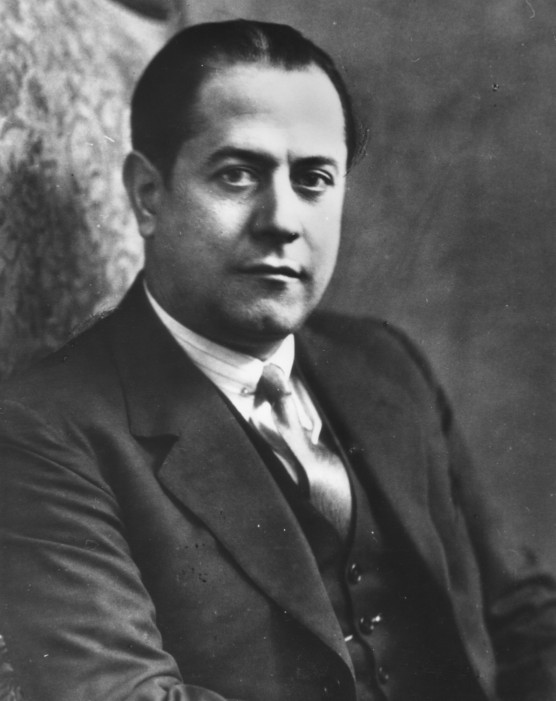
José Raúl Capablanca
Knowledge of Capablanca’s career has advanced enormously since the 1940s. In 1963 came the Weltgeschichte des Schachs monograph by James Gilchrist and David Hooper, a collection of tournament and match games so thoroughly researched that little could be added even now. In 1975 David Hooper and Dale Brandreth produced The Unknown Capablanca (descriptive notation), a complementary anthology of games from events other than tournaments and formal matches. Its sole drawback, Batsford’s hit-or-miss typesetting, was rectified in a 1993 Dover reprint.
Published by the Oxford University Press in 1978 and reprinted by Dover in 1982, Capablanca’s Best Chess Endings by Irving Chernev presents (in full algebraic notation) 60 complete games, annotated with emphasis on the final phase. Well over half are absent from the Golombek volume, a fact which underscores not only the inadequacy of Golombek’s selection but also Chernev’s readiness to embrace newly-found material. Written with deceptive casualness, Capablanca’s Best Chess Endings was, perhaps, Chernev’s finest book, combining hard analytical work and his customary screwball levity. Only Chernev could write annotations like (page 169) ‘“Don’t simplify against Capablanca!”, I keep telling them at the office’.
Since the 1970s, investigations have continued apace. We attempted to shed additional light in our 1989 book published by McFarland & Co., Capablanca: A Compendium of Games, Notes, Articles, Correspondence, Illustrations and Other Rare Archival Materials on the Cuban Chess Genius José Raúl Capablanca, 1888-1942. Then came The Games of José Raúl Capablanca (Caissa Editions, 1991, with a revised version from Chess Digest in 1994). Its readers should exercise caution and scepticism, given the extreme slackness of the compiler, Rogelio Caparrós, a kind of Lyndon Laird squared, but, if nothing else, the number of games gathered (over 1,200 bare scores) reinforces the point that any modern writer wishing to cream off Capablanca’s hundred best will have infinitely more raw material to choose from than did Golombek.
To do justice to Capablanca, however, an anthology of at least 200 annotated games is surely needed. Pending the realization of that dream, Golombek’s book will have to suffice. It is not a particularly attractive stand-in, even after its algebraic face-lift.
Afterword: ‘Capablanca Goes Algebraic’ first appeared on pages 43-45 of CHESS, March 1997. Later that year Chess Stars brought out a two-volume set of Capablanca’s ‘complete’ tournament and match games, with languageless annotations, but an anthology of the kind mentioned in the final paragraph above is still awaited.
In reviewing the article for presentation here, we noticed regarding the paragraph on book sales that although the 1935 letter to Capablanca from his publisher concerned A Primer of Chess, the 1937 royalty statement was for Chess Fundamentals. The two documents are reproduced below:
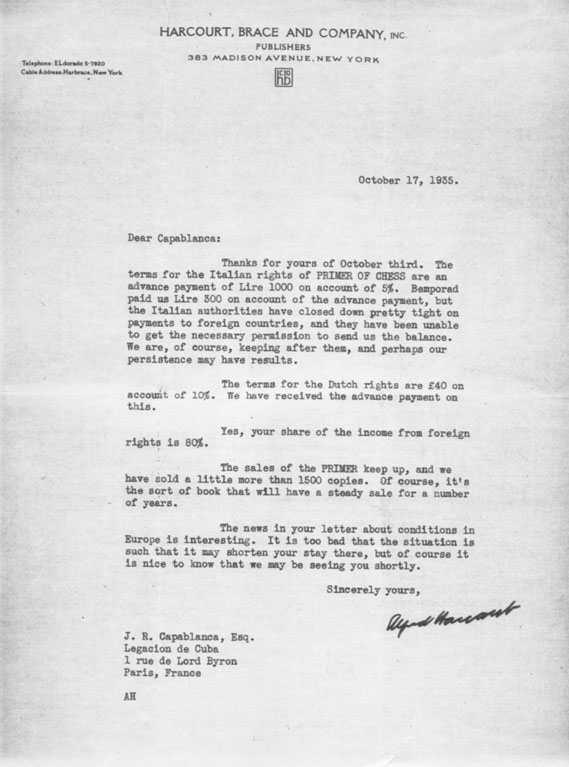
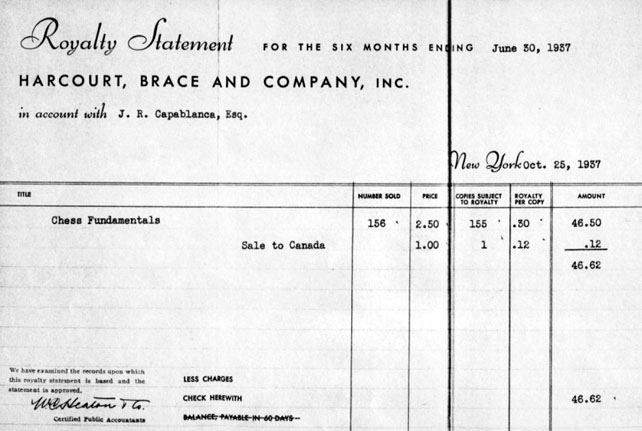
At the Central Café in Vienna on 2 December 1914, Richard Réti won a miniature against Dunkelblum (‘of Cracow’):
Richard Réti – Dunkelblum
Vienna, 1914
Three Knights’ Game
1 e4 e5 2 Nf3 Nc6 3 Nc3 Bc5 4 Nxe5 Nxe5 5 d4 Bxd4 6 Qxd4 Qf6 7 Nb5 Kd8 8 Qc5 Resigns.
The game was published on page 153 of the July-August 1915 issue of the Wiener Schachzeitung and has become an anthology piece. White’s seventh and eighth moves were awarded two and three exclamation marks respectively, and the conclusion is certainly a neat example of the double threat (to c7 and f8). Yet remarkably, the identical moves had been played before, and although the earlier game had been won by none other than Capablanca, it was promptly forgotten. The occasion was a simultaneous display in Washington on 6 January 1909. Missing the main threat, the young Cuban’s opponent, E.B. Adams, played 8...Nc6, which was naturally answered by 9 Qf8 mate.
The Capablanca score has been published in The Games of José Raúl Capablanca by Rogelio Caparrós, a compilation of 581 ‘official’ games (i.e. from tournaments and matches) and 619 games from exhibitions, simultaneous displays, etc. Unfortunately, the book contains many careless errors. For example, in Capablanca’s famous victory over Corzo in 1901 (11th match-game), the final move was 60 Kc5, and not 60 Kc6 (which is stalemate). Curiously, the same mistake is to be found on the New in Chess diskette of Capablanca’s games. Caparrós will even indicate the wrong player as the victor (e.g. Game 515 of the informal section). Games 289 and 292 are identical. Game 521 is headed ‘J.R.C. v Amateur, Unknown 1931’, yet is one of the Cuban’s most celebrated tournament victories (against Mattison, Carlsbad, 1929). The book has many typos (though few in the scores themselves), and the approach to quoting such information as sources (‘local papers and chess magazines’) is casual in the extreme.*
[When the present article was reproduced on pages 64-65 of Kings, Commoners and Knaves, a footnote was added: Three years later, in 1994, a ‘revised 2nd edition’ was published by Chess Digest. It was only marginally better.]
Whereas the ‘official’ games section adds little, if anything, to the Weltgeschichte des Schachs volume on the Cuban published in 1963, the ‘informal’ part contains games that will be new to almost every chess enthusiast. An example is the following:
José Raúl Capablanca – Randolph
Occasion?
Three Knights’ Game
1 e4 e5 2 Nf3 Nc6 3 Nc3 Bc5 4 Nxe5 Bxf2+ 5 Kxf2 Nxe5 6 d4 Ng6 7 Bc4 d6 8 Rf1 Be6 9 Bxe6 fxe6 10 Kg1 Nf6 11 Bg5 O-O 12 Qd3 Qd7 13 Bxf6 Rxf6 14 Rxf6 gxf6 15 Rf1 Rf8 16 Qb5 c6 17 Qb3 d5 18 exd5 cxd5 19 Ne2 Kg7 20 c3 e5 21 Ng3 Ne7 22 Nh5+ Kg6 23 Qc2+ e4 24 Qe2 f5 25 g4 h6 26 gxf5+ Rxf5 27 Qg4+ Rg5 28 Rf6+ Kh7 29 Rf7+ Kh8 30 Rf8+ Ng8
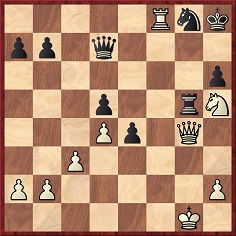
31 Qxg5 hxg5 32 Rxg8+ Resigns.
(Inside Chess, 1992)
In 2006 C.N. 4368 asked what the following games had in common:
Marshall v Capablanca, seventh match game, 1909
Janowsky v Capablanca, Havana, 1913
Capablanca v Znosko-Borovsky, St Petersburg, 1913
Lasker v Capablanca, St Petersburg, 1914
Chajes v Capablanca, New York, 1916
Capablanca v Marshall, St Petersburg, 1914
Capablanca v Chajes, New York, 1918
Morrison v Capablanca, New York, 1918
Marshall v Capablanca, New York, 1918.
The answer is that all of them were annotated in depth by Capablanca in the ‘Illustrative Games’ section of Chess Fundamentals and all of them were chopped out of the ‘completely revised & updated’ edition by Nick de Firmian (Random House, New York, 2006). Their removal made space for some newer games, including five and a half pages devoted to N. de Firmian v P. Youngworth, Lone Pine, 1980.
C.N. 4368 expressed the hope that anyone who chose to sell the book would at least warn prospective purchasers about what Mr de Firmian had done, the above being, alas, just one example.

C.N. 4379 discussed further the 2006 Random House edition:
In his Introduction (page vii) de Firmian explains the philosophy behind the butchery:
‘New concepts, new strategies, and even new chess notation make for a need to revise this classic for the 21st century.’
This disregards the fact that an algebraic edition already exists, published by Cadogan Chess in 1994. Since it presented the integral text in a mere 121 pages, why would any other algebraic edition, even if needed, have to save space by omitting reams of Capablanca’s material?
De Firmian also writes on page vii:
‘I have endeavored to replicate the care that went in to the 1921 version, with the intention to make a work with which Capablanca would be happy.’
He has done nothing of the kind, and Capablanca would obviously be devastated. In the 1934 Preface to the US version he wrote:
‘... Chess Fundamentals is as good now as it was 13 years ago. It will be as good a hundred years from now; as long in fact as the laws and rules of the game remain what they are at present. The reader may therefore go over the contents of the book with the assurance that there is in it everything he needs, and that there is nothing to be added and nothing to be changed. Chess Fundamentals was the one standard work of its kind 13 years ago and the author firmly believes that it is the one standard work of its kind now.’
De Firmian’s Introduction also summarizes some of the changes made (e.g. ‘Chapter 5, Openings, is completely new’) and says bizarrely about the book as a whole:
‘The chess historian should have little trouble deciphering which material is original if he or she is observant.’
This ‘he or she’ stuff, incidentally, is de Firmian’s preferred usage, and he foists it on Capablanca throughout. The first sentence in the first chapter of the first part of the original Chess Fundamentals stated: ‘The first thing a student should do, is to familiarise himself with the power of the pieces.’ De Firmian puts instead: ‘The first thing a student should do is to familiarize himself or herself with the power of the pieces.’ Correcting or amending Capablanca on matters large and small is such a thrill that de Firmian becomes unstoppable. Three times on pages 103-115 he alters ‘Kupchik’ to ‘Kupchick’, even though Capablanca’s spelling of the name was right. It is unfortunate that nobody was engaged by Random House to correct de Firmian. For instance, his ‘completely new’ 17-page chapter on the openings includes, on page 79, references to the ‘Four Knight’s Game’ and the ‘Two Knight’s Defense’. At no stage does de Firmian evince any knowledge of Capablanca’s career or games, and on page 14 he even goes wrong with a famous pawn ending presented by Capablanca. (See pages 319-320 of Kings, Commoners and Knaves and C.N. 3830.)
Beyond issues of arrogance and ignorance, the remaining question is whether de Firmian’s book attempts to deceive readers over the nature and extent of the alterations made. His Introduction (pages vii-viii) has a 17-line section entitled ‘What has changed from the original version’ in which he writes regarding the ‘illustrated [sic] games’ section:
‘Here we start with five of Capablanca’s original games (the most instructive ones in my opinion). After this, there are nine games from his time up to the present.’
How many readers would imagine from such a wording that Chess Fundamentals originally contained 14 illustrative games annotated by Capablanca and that de Firmian has eradicated all but five of them?
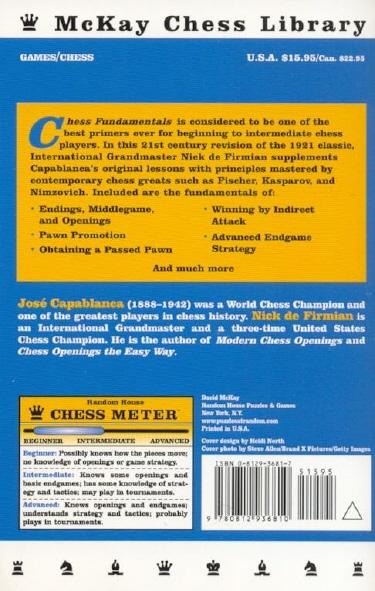
Publishers know that indolent and/or time-pressed vendors often make do with quoting from the back-cover blurb. As shown above, the Random House book states:
‘... de Firmian supplements Capablanca’s original lessons with principles mastered by contemporary chess greats such as Fischer, Kasparov, and Nimzovich.’
The presence of Nimzowitsch’s name is inexplicable, but the damning, deceitful word is ‘supplements’. De Firmian has not supplemented Chess Fundamentals. He has destroyed it.
See also Capablanca Book Destroyed.
Did Fred Reinfeld, the author of The Immortal Games of Capablanca (New York, 1942), know much about the Cuban’s career? In C.N. 473 we listed defects in the chapter on Capablanca in Reinfeld’s book The Human Side of Chess (London, 1953). The list is reproduced below, and it should be noted that the page numbers in the US edition (New York, 1952) are different. Twenty-four years on from the publication of C.N. 473 there are a few points that we would present differently today, but it remains extraordinary that Reinfeld made so many factual errors in a single 24-page chapter.
Below is an excerpt from a letter to us dated 19 January 1977 from Irving Chernev (San Francisco, CA, USA):

(5036)

Page 14 of The Immortal Games of Capablanca by F. Reinfeld (New York, 1942)
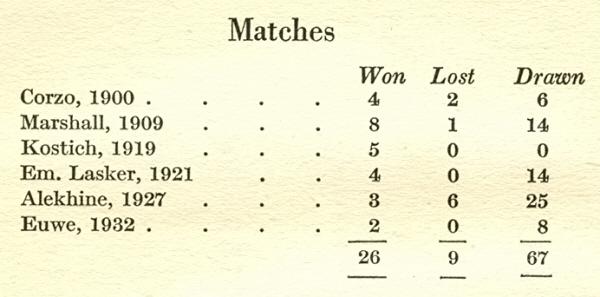
Page 20 of Capablanca’s Hundred Best Games of Chess by H. Golombek (London, 1947)
In the Lasker match there were ten, not 14, draws. The Euwe match was in 1931, not 1932. The only matter on which the books disagree is the year of Capablanca’s match against Corzo, and both are wrong. It was played in 1901.
The two books have been the subject of modern reprints which have not bothered to correct these (and innumerable other) elementary mistakes.
(5904)
José Raúl Capablanca by I. and V. Linder (Milford, 2010) stands out on one account only: its bibliography may be the most error-ridden ever published in a chess book. Although only four pages long, it features dozens of typos and other mistakes (with a far higher total if foreign accents are considered too). For an example we go no further than the first entry (on page 268):

No edition of Chess Fundamentals has contained an After ward (or Afterword) by Cherner (or Chernev). The book in question was My Chess Career.
(6642)
See too Harry Golombek’s Book on Capablanca and Rebuttals.
Regarding The Games of José Raúl Capablanca by Rogelio Caparrós (Caissa Editions, 1991), the publisher, Dale Brandreth, frequently expressed to us his frustration. An extract from his letter of 28 September 1992:
‘Caparrós asked me if I wanted to reprint his Capablanca book, but I declined, of course, because I can’t stand working with him and so totally resent his attitude whereby I am supposed to find all the errors – all uncompensated, naturally – while he gets full royalties.’
In letters dated 14 October 1993, 19 November 1993 and 4 May 1994 Dr Brandreth also informed us of the circumstances in which Caparrós arranged for a second edition to be published by Chess Digest, i.e. by Ken Smith.
A number of letters from Dale Brandreth mentioned his own wish to produce a comprehensive collection of Capablanca’s games, but the project did not come to fruition.
On 9 June 1993 he sent us some general observations about Rogelio Caparrós, including the following:
‘Caparrós is the best example I have ever seen of a true ignoramus and the trouble he can cause. What he is too dense to realize is that the people who praise his books are not fit judges, or at least have not properly examined the evidence. Were they impartial judges who took the time to check his material, they would find so many errors that they would be embarrassed to make any endorsement whatever. I am certain of that.’
Pages 209-210 of the 13/2007 Quarterly for Chess History had some observations about Rogelio Caparrós’ The Games of José Raúl Capablanca (Yorklyn, 1991) from the book’s publisher, Dale Brandreth. His main points:
The above account is fully corroborated by our own extensive correspondence at the time with Caparrós and Brandreth.
(10834)
We present below the correct moves of two simultaneous games given inaccurately/incompletely on page 228 of The Games of José Raúl Capablanca by R. Caparrós (Yorklyn, 1991).
José Raúl Capablanca – T. Kelly
Castleton, 2 October 1922
Ruy López
Source: Manchester Evening News, 14 October 1922, page 3.
José Raúl Capablanca – P. Natali
Manchester, 28 October 1922
Vienna Game
1 e4 e5 2 Nc3 Nc6 3 Bc4 Bc5 4 Qg4 g6 5 Qg3 d6 6 d3 Nge7 7 Bg5 Be6 8 Bf6 Rg8 9 Nd5 Bxd5 10 exd5 Nd4 11 O-O-O Qd7 12 Qh4 h5 13 Nh3 Ndf5 14 Qg5 O-O-O 15 c3 Rde8 16 Rhe1 c6 17 dxc6 Nxc6 18 Bd5 Nd8 19 Bxd8 Rxd8 20 Qf6 Rg7 21 Be4 Rdg8 22 d4 exd4 23 cxd4 Bb6
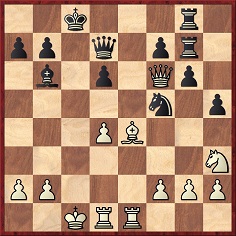
‘Usually Capablanca would have noted at a glance the jeopardy of his queen; but, to the amazement of the chess enthusiasts with whom the room was thronged, he played 24 Ng5 – an oversight for which with a wry little laugh he suggested that somebody should kick him.’
The game ended: 24 Ng5 Bd8 25 Bxf5 gxf5 26 Qxg7 Rxg7 27 Nf3 Rxg2 28 Re2 Kb8 29 Rc2 a6 30 Re1 f4 31 Ree2 Ka7 32 a3 Qg4 33 Rc3 Rxh2 34 Re8 Rxf2 35 Nd2 Qd7 36 White resigns.
Source: Manchester Guardian, 30 October 1922, page 3.
(3066)
To the Chess Notes main page.
To the Archives for other feature articles.
Copyright: Edward Winter. All rights reserved.